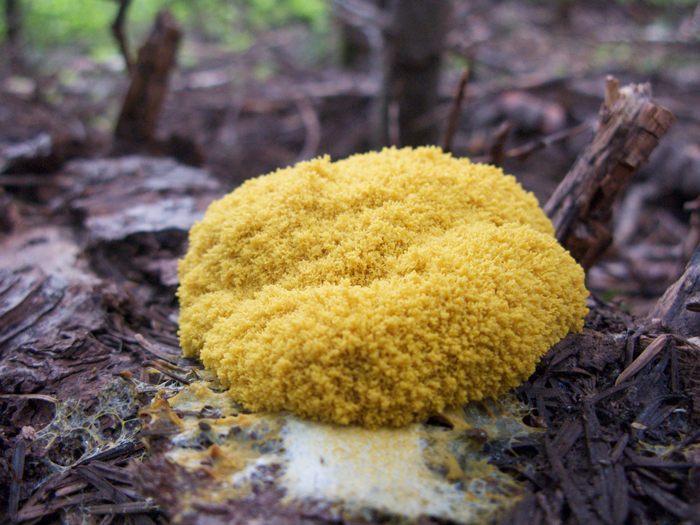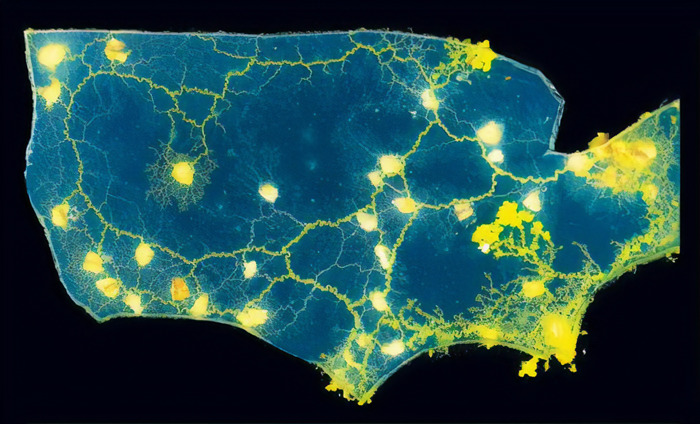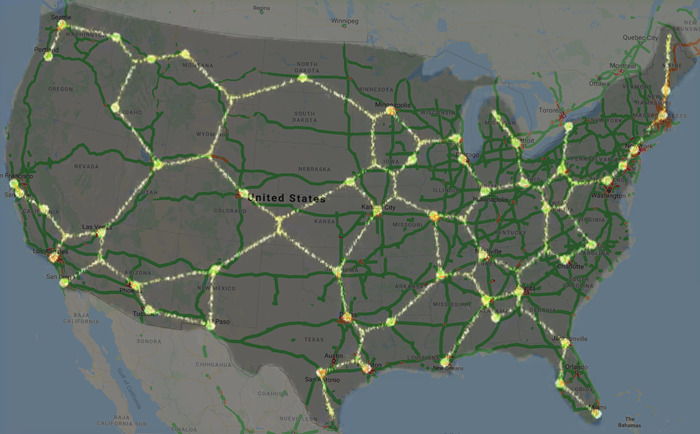
Scientists Used Slime Mold To Create The Most Efficient Traffic Map For The United States
It is human to want to be in control of things. Whether it is the stuff we’re working on now, or whatever that may be in the future, we try to maximize our grasp on the situations we encounter.
However, when it comes to attempting to control nature, it is best to let nature do what it knows and does best. In fact, nature has it all figured out to such a degree that there are some things that it does better than we as humans ever could. Let’s take slime mold as an example.
Science has harvested the power of nature in an attempt to improve the US road system
Image credits: Andrew Adamatzky and Jeff Jones
Over ten years ago, Andrew Adamatzky and Jeff Jones of the University of the West of England in Bristol harnessed the power of nature in a rather creative way. They drafted the ideal traffic map for the United Kingdom using slime mold. Ten of the UK’s most populated areas were used as the connecting points.
Bored Panda reached out to Professor Andrew Adamatzky to elaborate on his research. Andrew Adamatzky is a researcher in unconventional computing who compiles computing devices using unusual substrates, such as chemical reactions, slime mold, mushrooms, plants, and droplets.
An ideal road map for the US was created using slime mold and the power of science!
Image credits: Andrew Adamatzky and Jeff Jones
The origins of these experiments date back thirteen years ago: “One day, back in 2006, I looked at the pattern of slime mold network developed on a wet paper towel and I thought that this reminds me of a road pattern,” explained Prof. Adamatzky. “This is when I started the experiments.”
Slime mold (Lat. Physarum polycephalum) is a single-celled organism that, unlike most other beings of such nature, is visible to the naked eye. It forages for nutrients by changing shape and extending between the different food sources that it finds. The slime mold thus forms the fastest and safest links between each nutritional spot this way creating a protoplasmic network. It does so because it is attempting to maximize nutrients while minimizing the cost of transporting them throughout its body.
A comparison of US roads VS the paths the slime mold suggested
Image credits: Popular Science / Google Maps
The natural way that the slime mold looks for food and manages its consumption was the basis for drafting the ideal traffic map for the United Kingdom. The slime mold managed to recreate a nearly identical map of the way roads are built between the ten cities. There were slight deviations as the experiment did not factor in terrain, making some roads partially or completely nonexistent.
Here are slime mold computer simulations that suggest an alternative, more direct US road system
Video credits: Popular Science
This same slime-mold foraging concept was also used as a basis for a computer algorithm that would calculate the best pathways between specific locations. Popular Science posted some slime mold computer simulations mimicking the United States’ country-wide road system.
Professor Adamatzky also had some fun with this experiment—as it is sometimes tempting to do—by throwing in some salt where the slime mold was residing. The idea was to imitate a disaster in that area: “Salt typically diffuses from the original crystal on a wet substrate, so it can imitate any kind of a disaster involving contamination, e.g. nuclear power plant accident.”
Video credits: Popular Science
Slime mold has also been used to form the most efficient railway network in Japan
Video credits: Seiji Takagi
Since the initial experiment, slime mold networking has been used in a number of other road planning projects. Some of the most notable examples are the development of the Japanese railway system as well as a road map of the Iberian Peninsula. This is pretty cool to say the least.
Professor Adamatzky also noted that this can be applied to more than just roads: “It can be used in any application, where we need to connect a set of sites by a proximity graph.” This means that anything as grand as a subway or railroad track or as small as a university campus pathway plan can be drafted using slime mold.
Here is what the slime mold had to say about the road system in the Iberian Peninsula
Video credits: Adamatzky A. & Alonso-Sanz R.
They noted that slime doesn't take into account the terrain, but it also doesn't take into account city congestion and road construction! Haha! But seriously, science is cool.
Wow, how can you get the facts so wrong on this one? This was NEVER used to develop any kind of railway or road system. It MIMICKED the systems that were already there. The US slime mold is hilariously, shockingly ridiculous. This wouldn't be a possible set of road maps, let alone an ideal traffic map. Ever heard of mountains???
They noted that slime doesn't take into account the terrain, but it also doesn't take into account city congestion and road construction! Haha! But seriously, science is cool.
Wow, how can you get the facts so wrong on this one? This was NEVER used to develop any kind of railway or road system. It MIMICKED the systems that were already there. The US slime mold is hilariously, shockingly ridiculous. This wouldn't be a possible set of road maps, let alone an ideal traffic map. Ever heard of mountains???






54
6